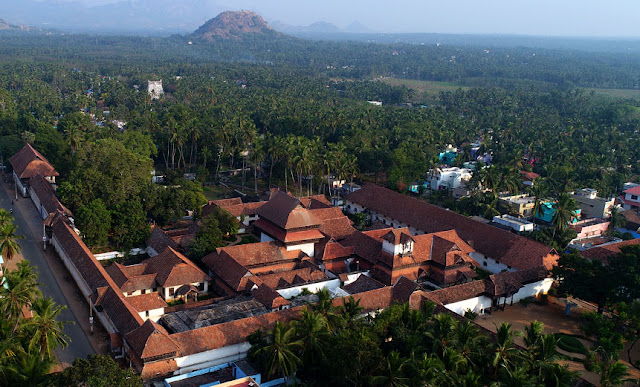 |
| Padmanabhapuram Palace |
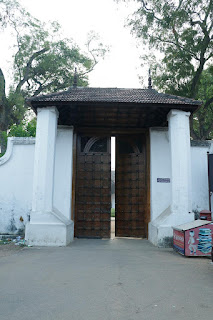 |
| Entrance |
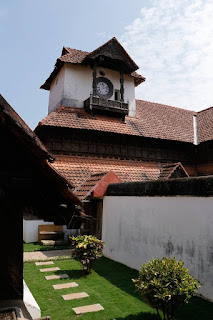 |
| Mani Medai |
Within the ancient Kalkulam fortification is the sprawling Padmanabhapuram Palace complex, an early administrative headquarters of the erstwhile Venad rulers. When searching for the roots of the fort and palace at Kalkulam one cannot overlook the Mudaliyar records which hint that the forts in Kalkulam and nearby Udayagiri came into existence just before 1600 A.D., during the reign of Iravi Varma Kulasekharan (r.1592-1609). John Nieuhoff, the seventeenth century Dutch traveller recorded: "Kalkulong (Kalkulam) is a very large city…being on one side strengthened by inaccessible mountains, on the other by wall, the under most of it is of stone, the uppermost of brickwork, in all 24 feet high, the royal palace stands at the west end, being surrounded by a stone wall."
Architecture
Over 400 years old, Padmanabhapuram Palace is considered to be the largest wooden palace in all of Asia. Spread over an area of 6.5acres with over 15 edifices every bit of this magnificent complex boasts of intricate woodwork that highlights the outstanding skills of the artisans of yore. Nestled in the foothills of the Western Ghats this ancient architectural marvel portrays the cultural opulence of God’s Own Country.
The sprawling palace complex, secured by a stone fortification, had a moat running all around the fort walls. A mukhya vāthil, the principal gateway, located on the western side of the fort wall acts as the main entrance to the complex. The palace complex is constructed using locally available materials and techniques. Stone, quarried from nearby regions, was used to build the foundation and also for the pillars on the ground floor. The records associated with the construction of the fortification indicate the use of laterite for fashioning the battlements atop the double layered stone, however, burnt brick and lime mortar was mostly employed to build the structures within the palace complex. Lime, mixed with various herbs and secret ingredients, were used to lay the floor, which was polished to a mirror-like finish.
The exquisite craftsmanship of the local carpenters is best exhibited in the timber elements seen in the palace. Timber is used for constructing the walls, the roof frame, and also the structural elements such as pillars and beams. The humid tropical climate and the heavy Monsoons have an important role in the evolution of a particular architectural style in Kerala. The many internal courtyards served multiple purposes – as light wells facilitating better lighting and ventilation in the interiors as well as the core around which everyday life revolved in the olden days. A unique feature of the complex is that the vast pile of buildings are interconnected by means of covered corridors and overhead walkways that provide easy access to different sections of the palace complex.
A symphony created by brilliant artisans in wood and stone, the Padmanabhapuram Palace is an artwork in itself and it is no wonder that this monument of outstanding engineering has withstood the test of time.
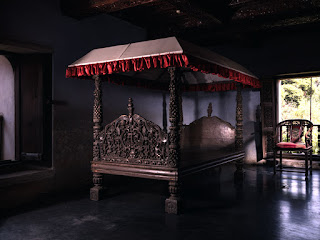

Palace Seeing Timings
Tuesday to Sunday : 9:00 - 12:30 hrs, 2:00 - 4:30 hrs.
Closed on all Mondays
Palace Entrance Fee
Indian Citizens
Adult Rs. 35.00 /-
Children (5-12 yrs) Rs. 10.00 /-
Foreign Nationals
Adult (Foreign National) Rs. 300.00 /-
Children (Foreign National) Rs. 100.00/-
Still and Video Camera
Still Camera Rs. 50.00 /-
Video Camera Rs. 2500 /-
Padmanabhapuram Palace Kanyakumari
 Reviewed by Maddy
on
4:45 AM
Rating:
Reviewed by Maddy
on
4:45 AM
Rating:
 Reviewed by Maddy
on
4:45 AM
Rating:
Reviewed by Maddy
on
4:45 AM
Rating:

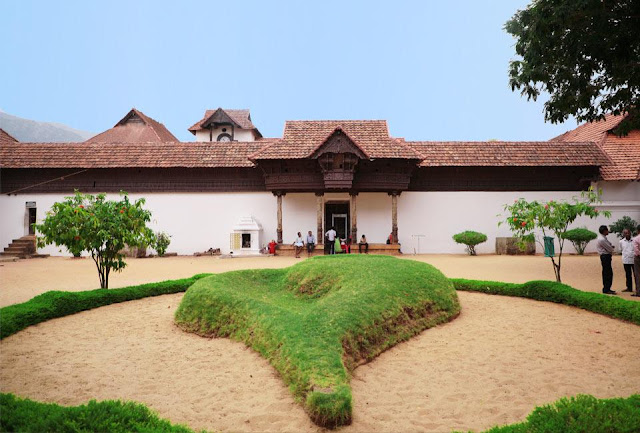
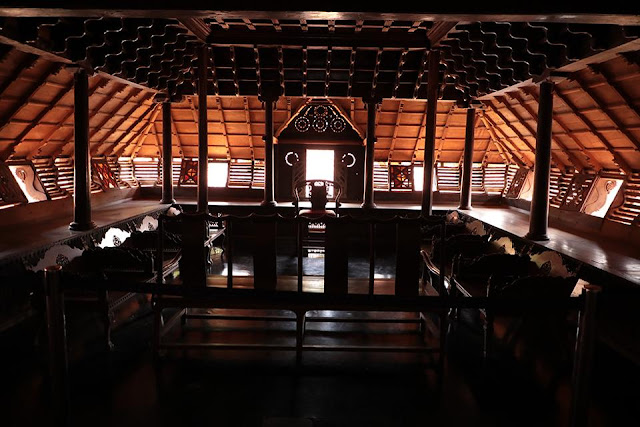
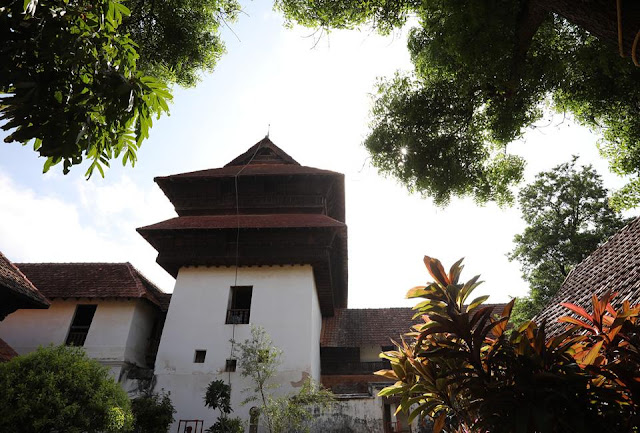






No comments: